Subscribe our newsletter
Please Subscribe our news letter and get update.


Overview:
About oral care products of ventilated patients
Oral care has a long history with early forms of oral hygiene dating back to Babylonia in 3500 BC. The first toothbrush invented in china during the late 1400s, featured stiff hog hairs attached to bamboo stick. However, the modern tooth brush that is used today was introduced in 1938 by Dupont. In the context of ventilated patients, oral care plays a vital role in maintaining their overall health and preventing complications. As these patients face higher risk due to reduced saliva production, prolonged intubation, and the presence of endotracheal tubes. Proper health care is crucial for preventing infections, aspiration pneumonia etc. Interestingly, the significance for oral care did not receive the attention it deserved. However, oral care for ventilated patients has emerged more prominently in modern healthcare practices.
As a result, specific protocols and guidelines for oral care have been established, interdisciplinary teams now collaborate to ensure oral care for ventilated patients. These efforts include frequent assessment, appropriate positioning, suctioning, moisturizing, and regular oral hygiene practices. In the realm of manufacturing oral care products, the key players are Medline, Stryker, Kimberly Clark and others.
The future of oral care for ventilated patients shows great potential for advancements. These include the development of innovative oral care products such as Q care oral cleansing & suctioning system, Perox A mint solution, suction swab, suction toothbrush, covered Yankauer and advanced oral moisturizer spray will offer best care to ventilated patients. The integration of telemedicine and remote monitoring technologies will provide real guidance and support during oral care procedures. Lastly, oral care for ventilated patients is set to improve significantly, leading to better oral health outcomes.
Scope
Patent analysis
Product Focus (Filing Country)
Our report shows country wise patent filings on tooth brush and oral care devices.
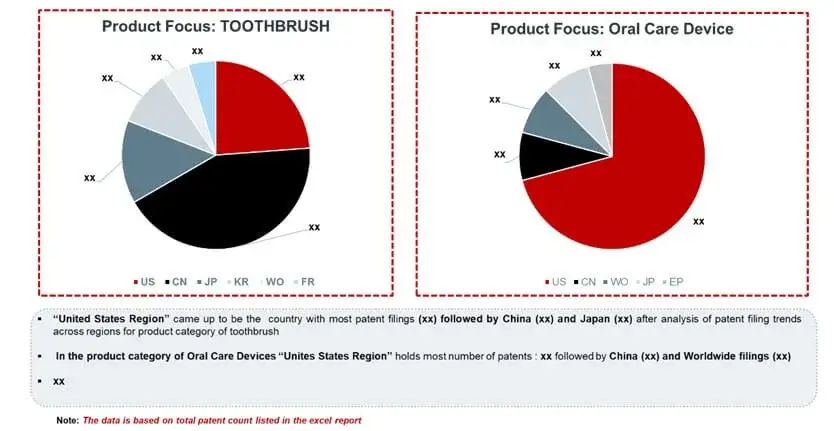
Key Assignee
Report shows patent filing by different assignees on various oral care method used for ventilated patients
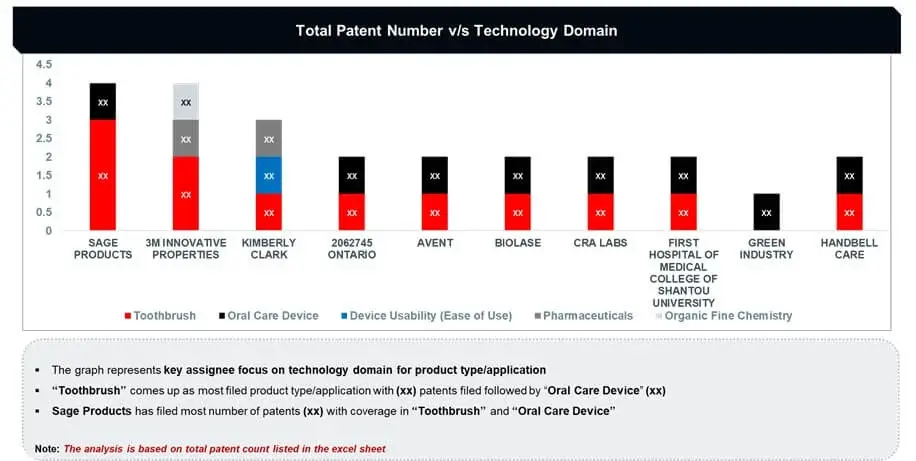
Patent Filing Trend (Product Focus)
Our report shows patent filing on tooth brush and other oral care methods used for ventilated patients between 2004 and 2013.
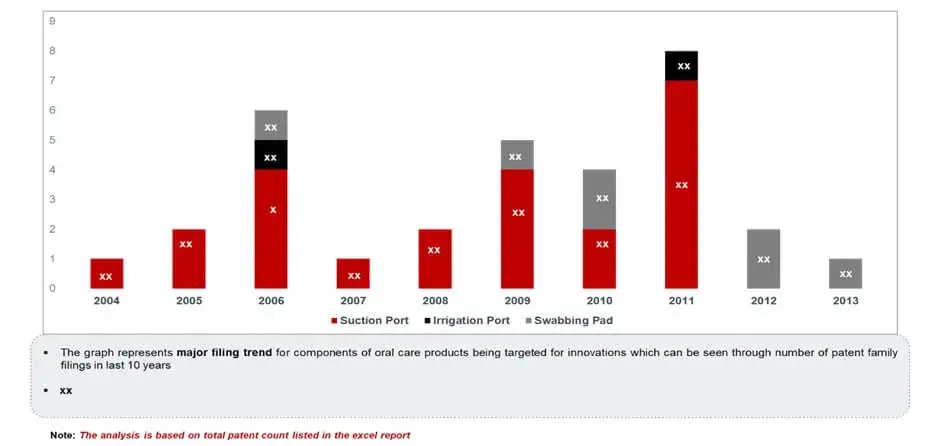
Patent Filing Trend (Component Innovation)
Our report showcases components of oral care products with patent filing between 2004 and 2013.
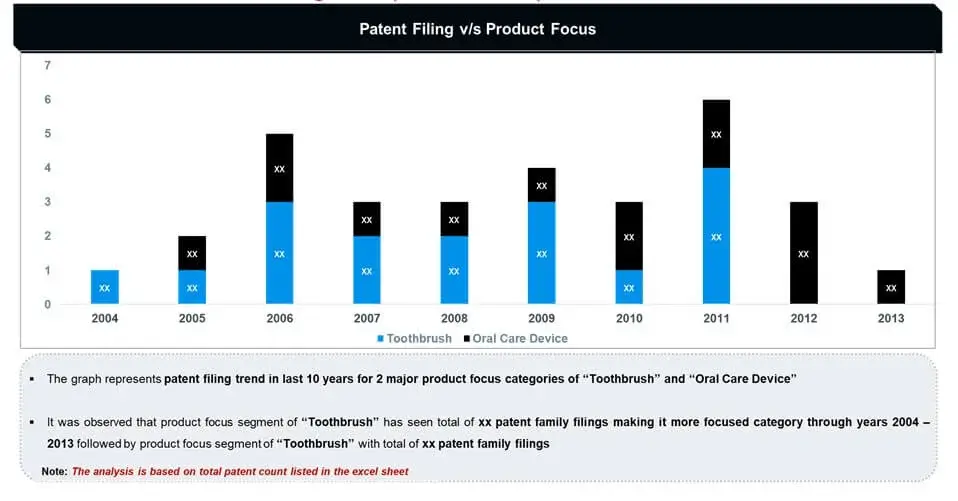
Geographical analysis
Our report shows key players of oral care products for ventilated patients in Europe, United Kingdom, and United States
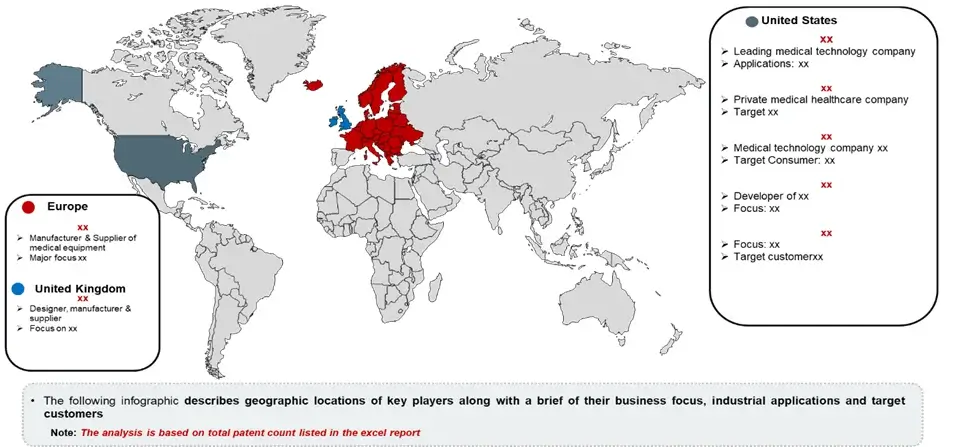
Product Type
Our report showcases the companies and the manufactured product types.
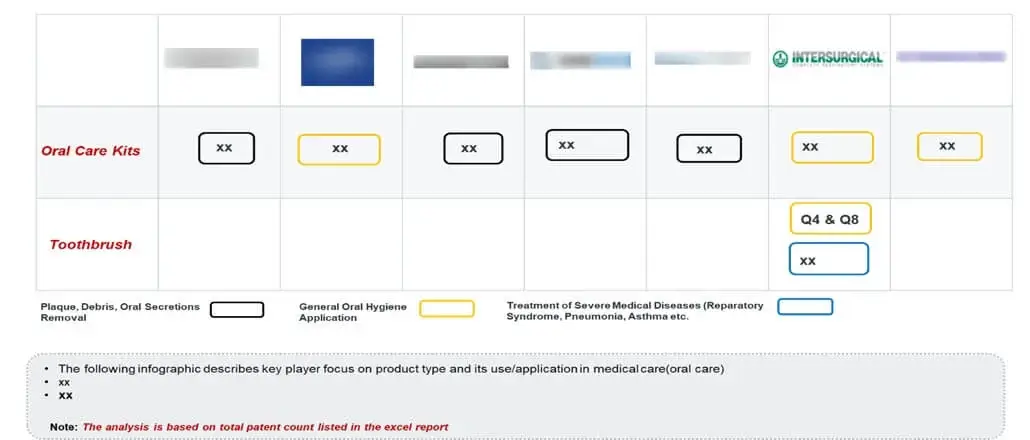
Key Players
Our report exhibits product types and the number of companies that manufacture the particular product type.
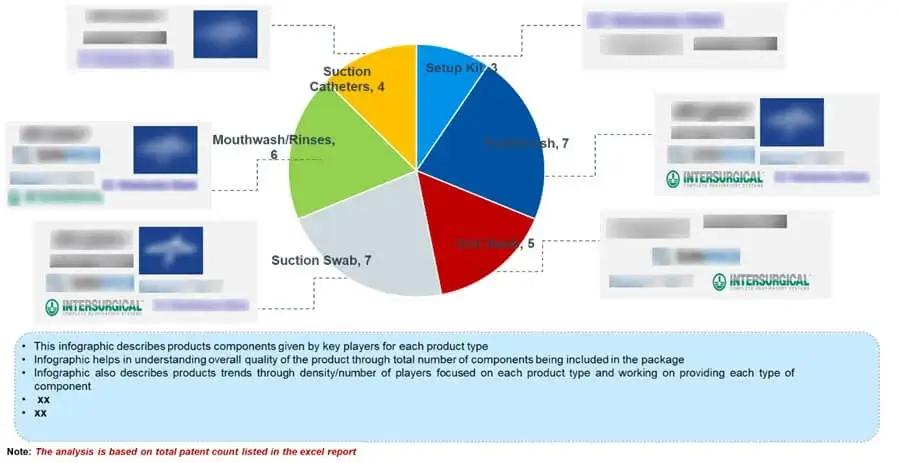
Problems and Solutions Analysis
Our report identifies problems and offers solutions through the patents filed on oral care for ventilated patients.
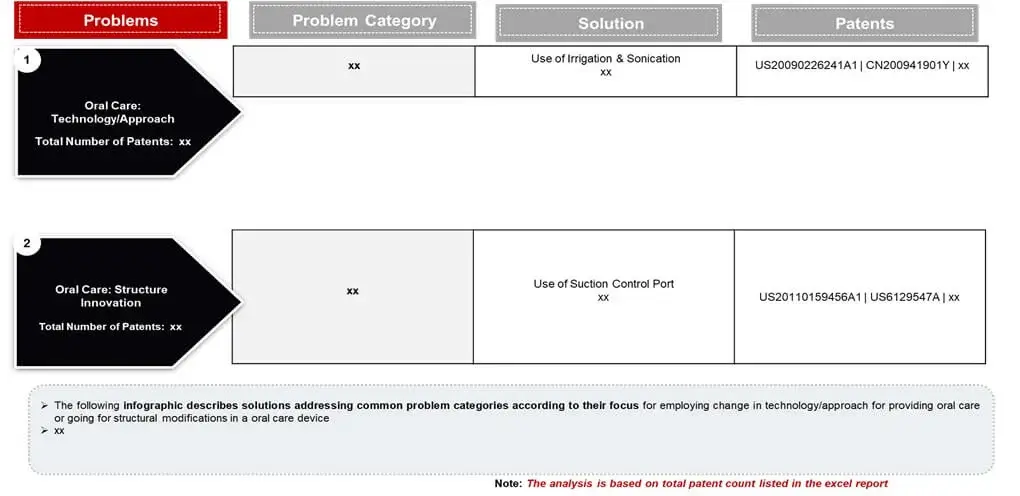
Report insights
Report highlights
In order to give the most precise estimations and forecasts, Wissen Research uses an extensive and iterative research approach that is focused on reducing deviation. The company blends top-down and bottom-up methodologies for market segmentation and quantitative estimation. In addition, data triangulation, which examines the market from three separate angles, is a recurrent topic present in all of our research studies. Important components of the approach used for all of our studies include the following.:
Preliminary data mining
On a wide scale, unprocessed market data is collected. Continuous data filtering makes sure that only verified and authenticated sources are taken into account. Additionally, data is extracted from a wide range of reports in our repository and from a number of reputable premium databases. We gather information from raw material suppliers, distributors, and purchasers to help with this since understanding the entire value chain is crucial for a thorough understanding of the market.
Surveys, technical symposia, and trade magazines are used to gather information on technical concerns and trends. Technical information focusing on white space and freedom of movement is also obtained from an intellectual property standpoint. Additionally, information on the industry’s drivers, constraints, and pricing patterns is obtained. As a result, a variety of original data are included in the material that is then cross-validated and certified with published sources.
Statistical model
We use simulation models to generate our market projections and estimates. Every study receives a special model that is tailored to it. Data for market dynamics, the technology environment, application development, and pricing patterns are gathered and supplied into the model all at once for analysis. The relative relevance of these factors is investigated, and their impact on the forecast period is assessed, using correlation, regression, and time series analysis. The process of market forecasting combines technological analysis with economic strategies, practical business acumen, and subject expertise.
Econometric models are frequently used for short-term forecasting, but technology market models are typically employed for long-term forecasting. These are based on a confluence of the business environment, regulatory environment, economic projection, and technical landscape. In order to develop global estimates, it is preferable to estimate markets from the bottom up by integrating data from key regional markets. This is required to ensure accuracy and a complete comprehension of the subject. Among the variables taken into account for forecasting are:
scenario for raw materials and supply versus pricing patterns
Regulations and anticipated developments
We give these criteria weights and use weighted average analysis to assess their market influence in order to calculate the anticipated market growth rate.
Data Collection Matrix
Primary research | Secondary research |
|
|
1. Introduction
1.1 Objective
1.2 Technological categorization
1.3 Inclusion & Exclusion
2. Overview of oral care for ventilated patients
2.1 History
2.2 Advantages
2.3 Types of oral care products for ventilated patients
3. Patent analysis
3.1 Key assignees
3.2 Publication countries
3.3 Filing trends
3.4 Legal status
3.5 Product focus (filing country)
3.6 Patent filing trend
3.7 Component innovation v/s publication year
3.8 Top protection countries
4. Geographical analysis
4.1 Geography of key players (key regions, business focus, target customer)
5. Technology/ Product analysis
5.1 Product type (key player’s v/s medical application)
5.2 Key players (product focus v/s product components)
6. Problems and solutions
7. Conclusion
S.no | Key highlight of Report | |
1 | Patent analysis | · Key assignees · Publication countries · Filing trends · Legal status · Product focus by filing country · Key assignee (product/industry domain) · Patent filing trend (product focus by filing year) · Component innovation v/s publication year · Top protection countries |
2 | Geographical analysis | · Key players (key regions, business focus, target customer) |
3 | Product analysis | · Product type (key player’s v/s medical application/use) · Key players (product focus v/s product components) |
Figure number | Description |
1 | Key Assignees |
2 | Publication Countries |
3 | Filing Trends |
4 | Legal Status |
5 | Product Focus |
6 | Component Innovation v/s Publication Year |
7 | Top protection Countries |
8 | Geographical presence of key players |
9 | Key Players v/s Medical Application/Use |
Please Subscribe our news letter and get update.
© Copyright 2024 – Wissen Research All Rights Reserved.